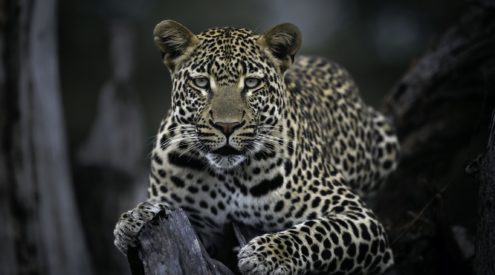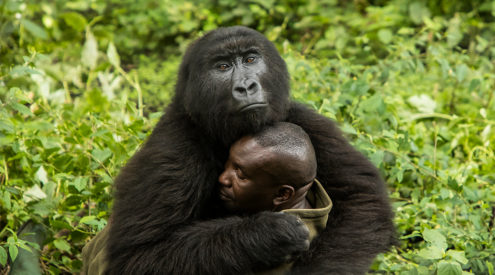An hour’s flight from Bali and to the west of the town of Labuan Bajo on Flores Island in Indonesia lies the Komodo National Park. Famed for the Komodo dragon, it is fast becoming a popular scuba diving destination for its incredible marine life. The park consists of two large islands, Komodo Island and Rinca Island (where dragons can be seen) and numerous small islands, many of them uninhabited. The best way to dive Komodo National Park is on a liveaboard, anchoring in sheltered bays at night and moving from one good dive site to the next. We spent 10 nights on the Embun Laut (Misty Sea) completing a circle of the northern dive sites. We were there over springtides and the currents were ferocious – it is not a destination for beginner divers and I’d suggest planning your trip there over neap tides. We did three dives a day and a few night dives. These were the highlights:
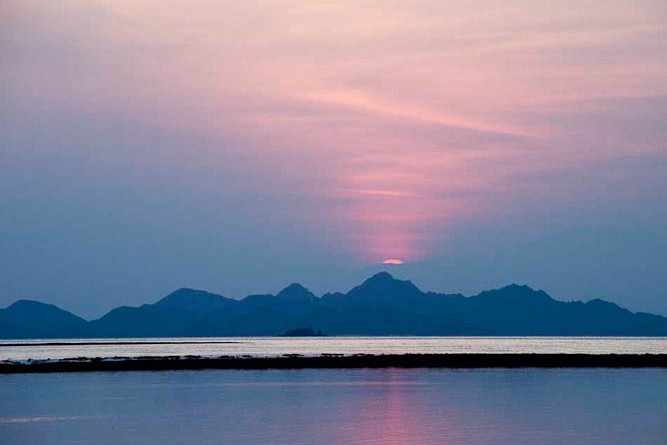
Sunrise on another perfect day over the Komodo Islands
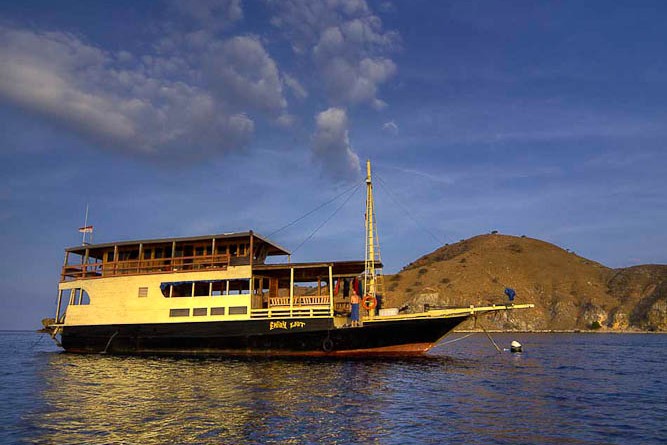
At anchor for the night on our liveaboard Embun Laut (Misty Sea)
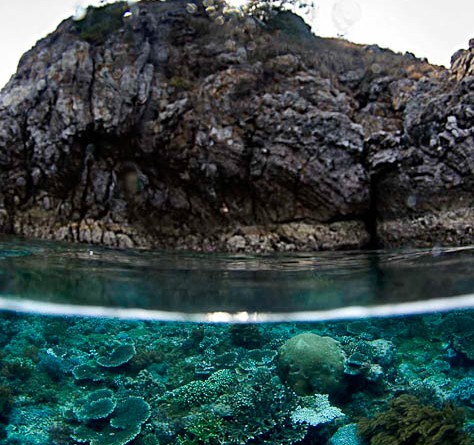
A typical dive site at Komodo National Park: a protruding rock in the middle of nowhere surrounded by steeply sloping reef. We often had to dive in the lee of extremely strong currents
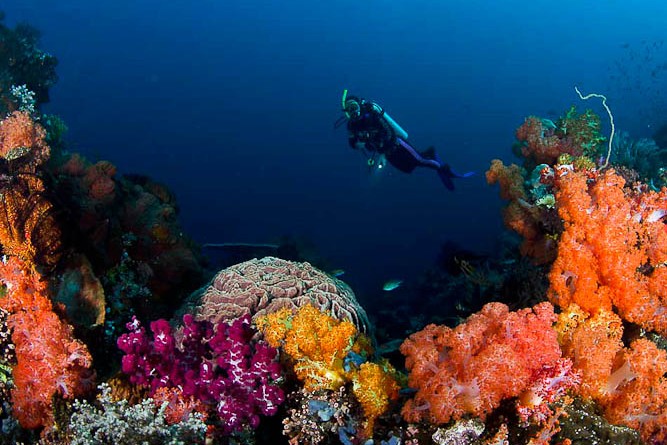
Rich colours of the soft corals and exceptionally clean water at Crystal Rock
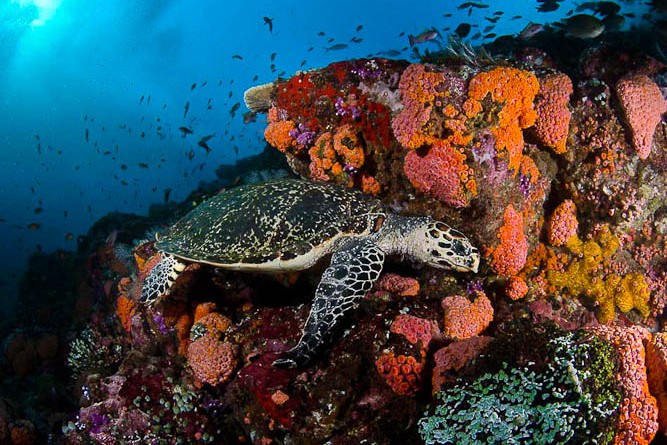
Resting hawkbill turtle
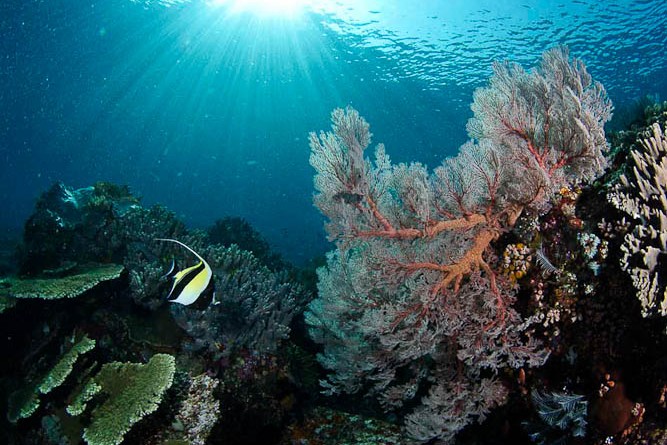
Reef scene at Komodo National Park
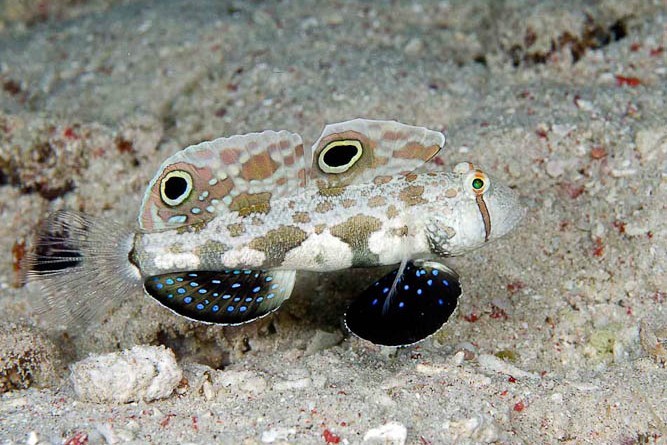
Signal goby (signigobius biocellatus)
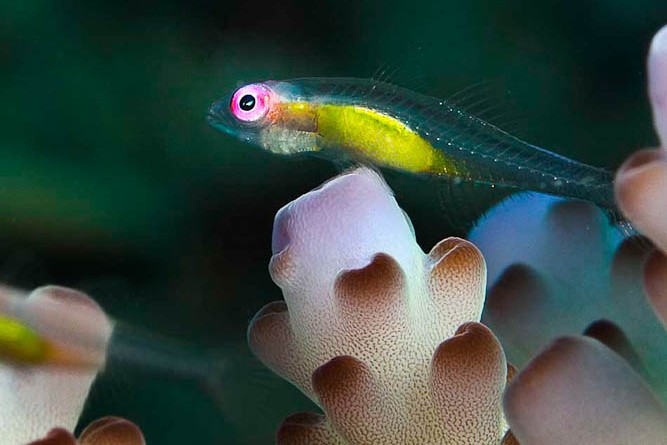
Redeye hovering goby (bryaninops natans)
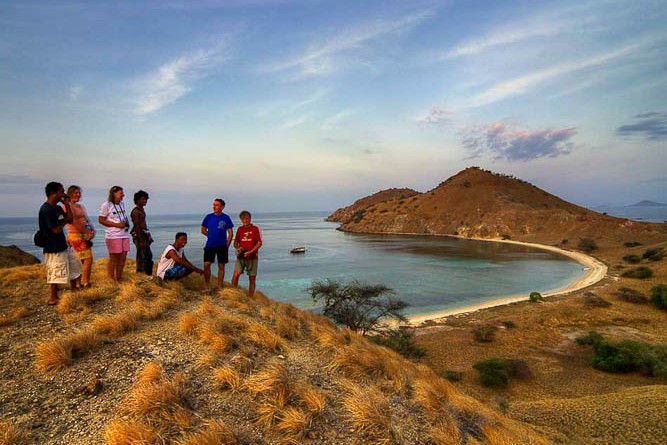
Our group looking down on our liveaboard anchored in the bay below
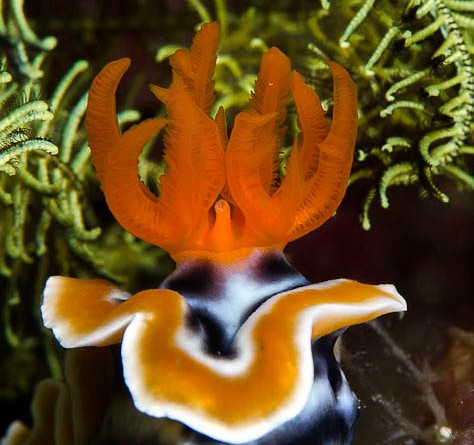
Nudibranch chromodoris
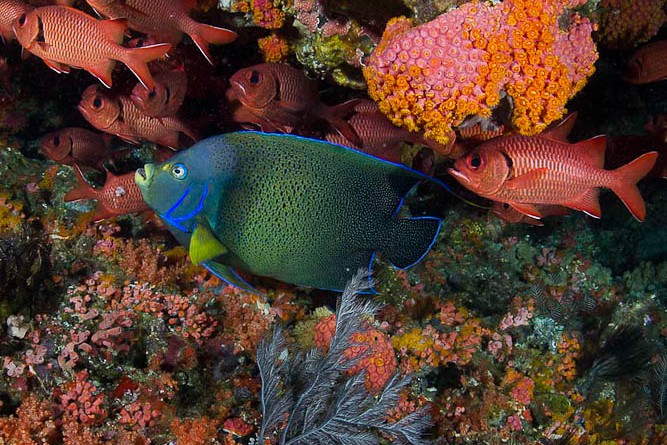
My personal favourite: the semicircle angelfish (pomocanthus semicirculatus)
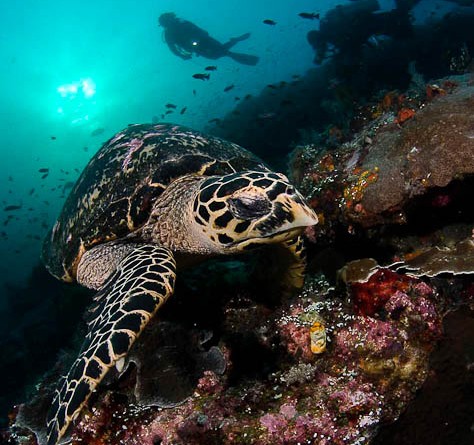
Hawksbill turtle
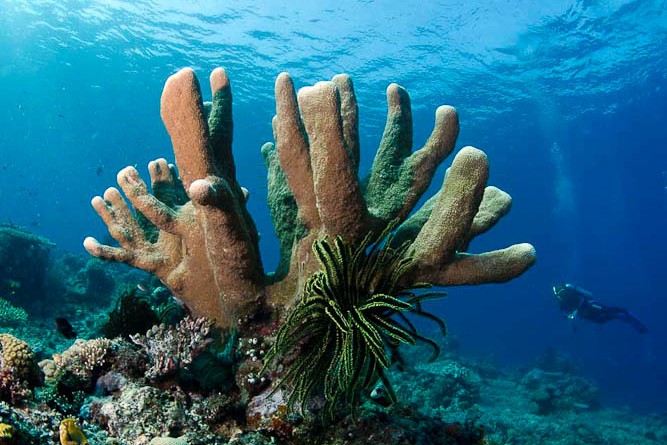
Hard coral
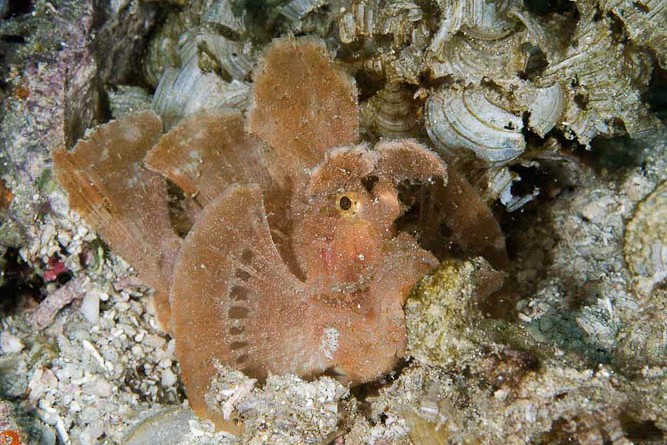
The rare and well camouflaged paddleflap scorpionfish
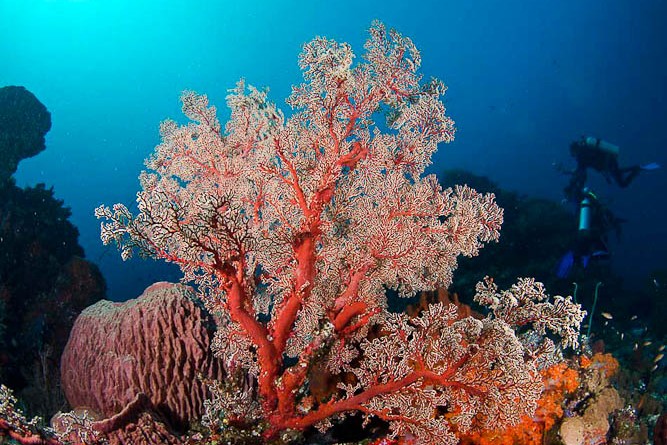
Gorgonian fan
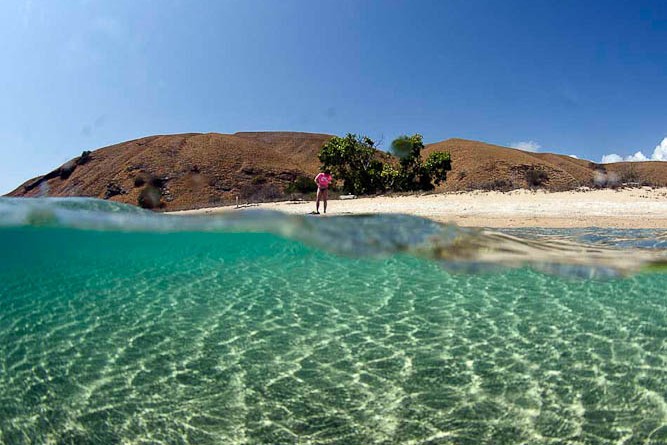
Going ashore on a deserted island
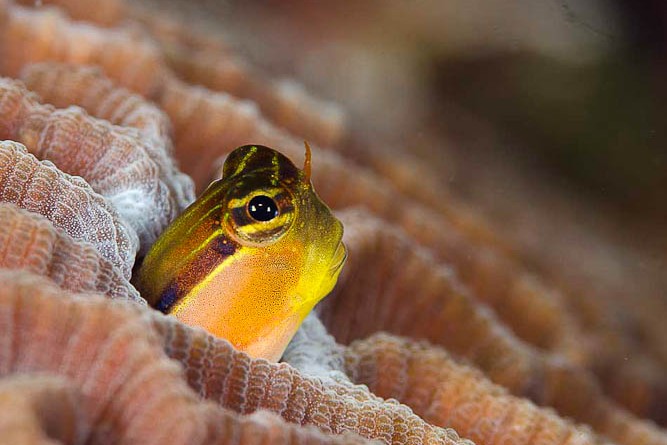
A goby in its home
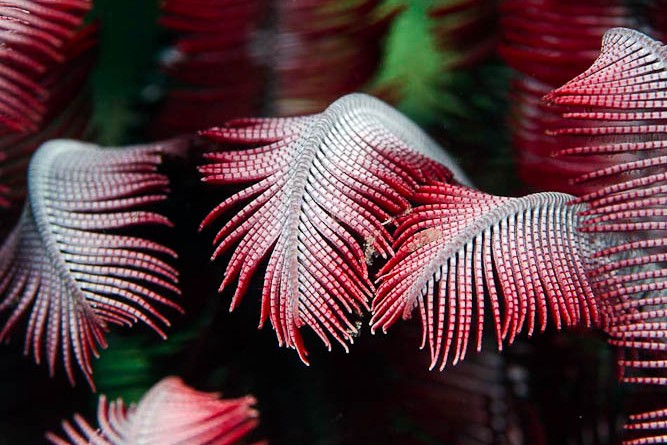
Featherstars occur in many vivid colours
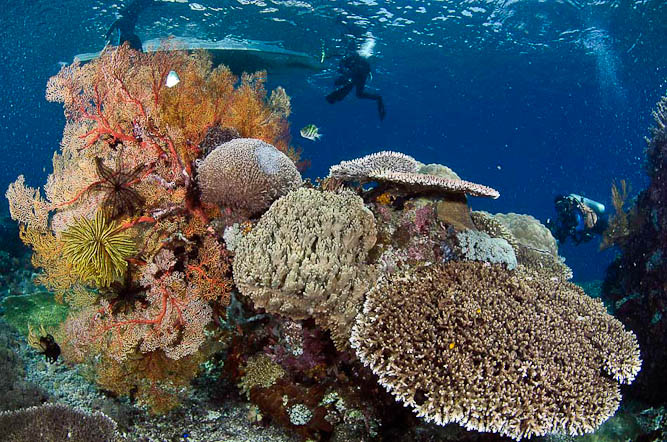
Divers being collected at the end of a dive
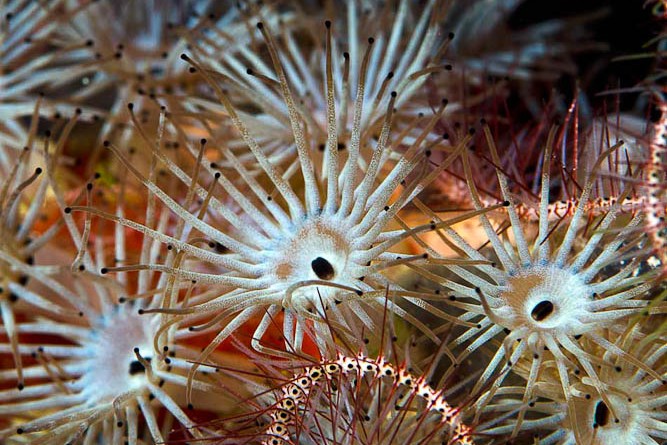
Coral polyps looking like daisies in a field
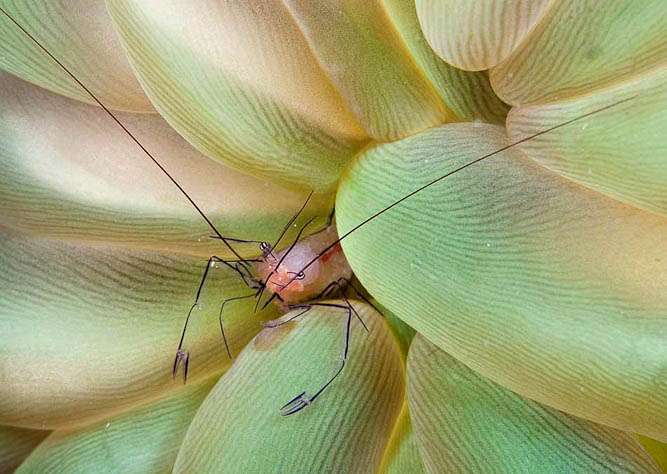
Bubble anemone shrimp
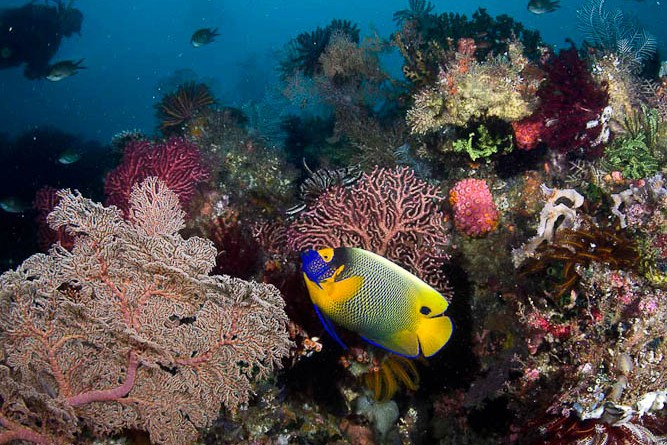
Bluegirdled angelfish
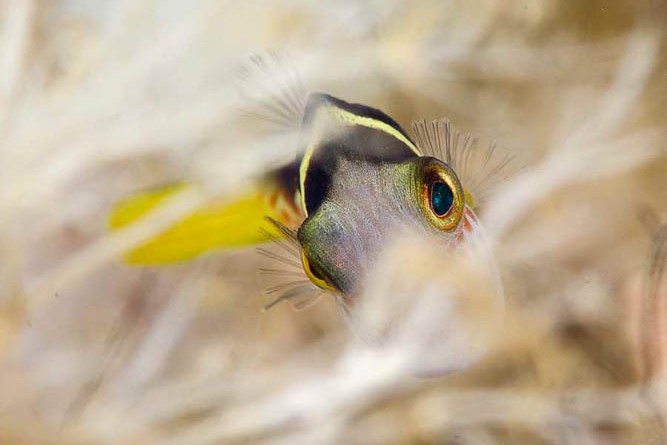
Blacksaddle toby peeping out at the photographer. Its pectoral fins make it appear as if it has long eyelashes
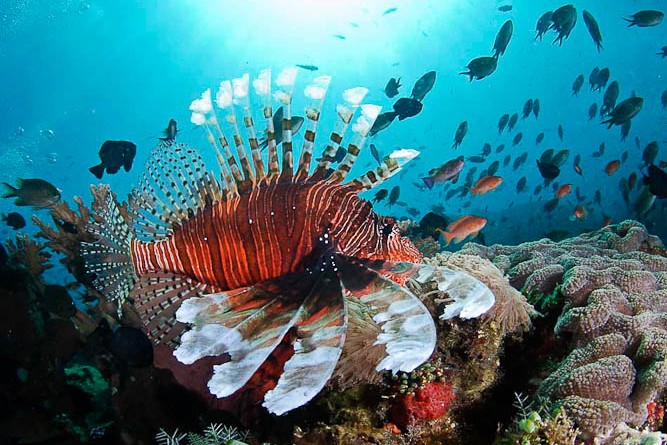
Lionfish on the hunt
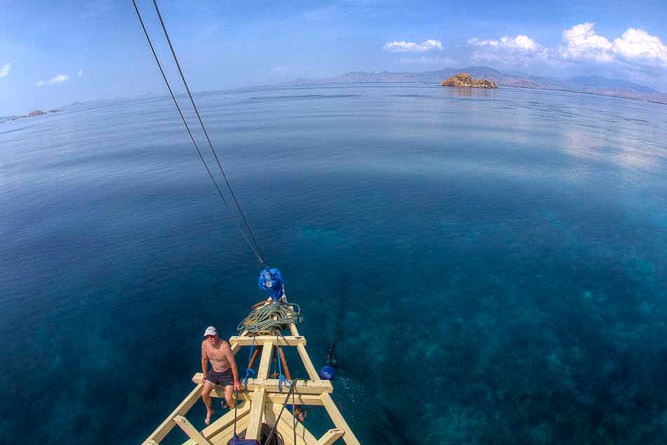
At anchor tied to a permanent mooring near a dive site
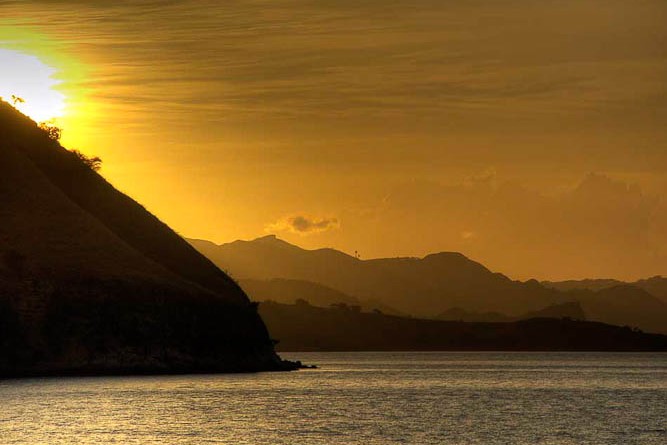
Sunset over the Komodo Islands
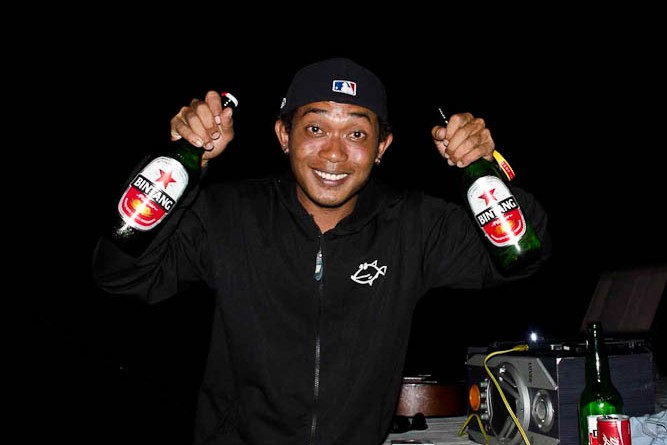
Dive guide Rama producing music and beer at the end of the day
The easiest way to fly to Komodo National Park is through Singapore and Bali so it is worthwhile combining your visit with a few days diving in Bali (which was a pleasant surprise). Our trip was very well organised by Prodive Travel who are now organising regular trips there. If you want to visit and dive the Komodos contact them at [email protected] or visit their website at www.prodive.co.za









